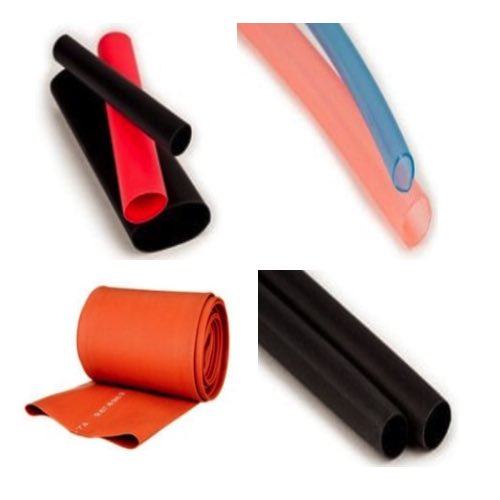Cable Tubing

Cable tubing is an essential component for protecting and organizing electrical wiring across a wide range of applications. RSP Supply carries a full line of flexible cable tubing options, including heat shrink tubing and split loom tubing, designed to enhance system safety, reliability, and long-term performance. By enclosing individual wires or bundled cables, tubing reduces exposure to abrasion, vibration, moisture, and environmental stress.
Heat shrink tubing provides a tight, conforming fit when heated, sealing the wire or connection and helping protect against water intrusion and contamination. Split loom tubing, including corrugated and convoluted styles, allows for easy installation and access while still delivering durable mechanical protection. Both types make it easier to separate wire groups, create visual identification through color coding, and minimize cable-to-cable chafing that can lead to insulation failure. By protecting cables and helping manage heat and interference, tubing extends wire lifespan and supports safe operation in dense electrical environments.
FAQs
Q: What is cable tubing used for?
Cable tubing is used to protect electrical wires from abrasion, vibration, moisture, and mechanical damage while also improving organization and system reliability.
Q: What is the difference between heat shrink tubing and split loom tubing?
Heat shrink tubing shrinks when heated to create a tight, sealed fit around wires or connections. Split loom tubing features a longitudinal slit, allowing wires to be inserted or removed without disconnecting them.
Q: Can split loom or corrugated tubing be used for fiber optic cables?
Yes, split loom and corrugated tubing can be used to protect and organize fiber optic cables, helping shield them from physical damage and environmental exposure.
Q: What materials are commonly used for wire loom tubing?
Wire loom tubing is commonly made from polyethylene, which offers flexibility, lightweight construction, and effective protection for electrical wiring.
Q: Are wire looms used in automotive applications?
Yes, wire looms and wire harnesses are widely used in automotive applications to route, organize, and protect electrical wiring throughout vehicles.
Why Buy Cable Tubing from RSP Supply
RSP Supply offers a comprehensive selection of cable tubing solutions, including heat shrink, split loom, and flexible wire loom tubing for industrial and electrical applications. Our products are sourced from trusted manufacturers and designed to support clean installations, reliable protection, and long-term performance. Customers rely on RSP Supply for knowledgeable support and dependable components that meet the demands of complex wiring systems.

